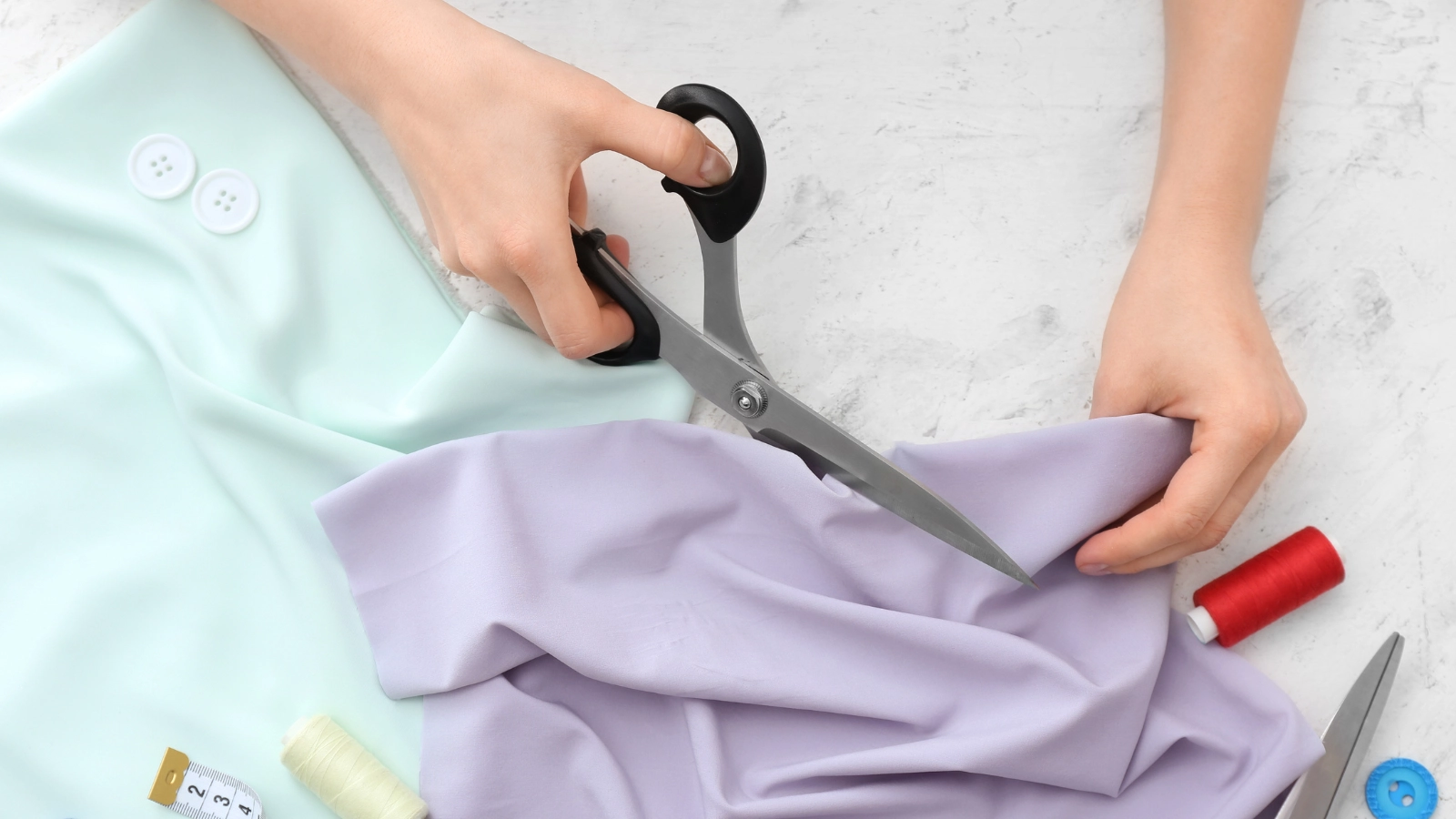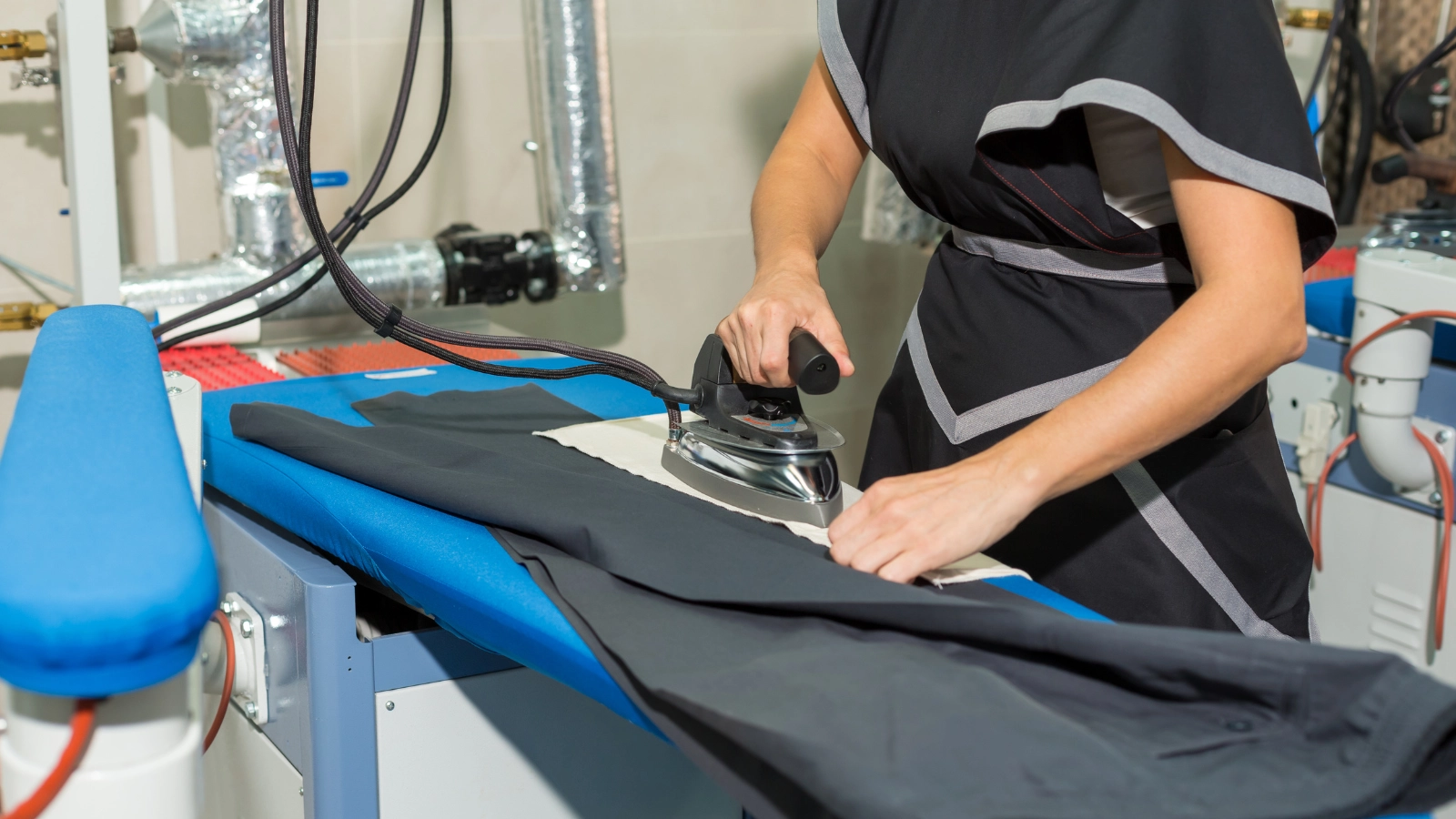Have you ever noticed that even clothes in your size don't always fit perfectly? Whether it's a sleeve that's too long, a waist that's too loose, or a hemline that needs adjusting, these common fit issues can make your wardrobe less functional.
Understanding how to make clothes fit perfectly improves more than their appearance. It'll also transform your entire approach to personal style. Let's explore the essential techniques needed to achieve that ideal fit.
Key Takeaways
- Get accurate body measurements of your bust, waist, and hips to know your size.
- Master basic alterations like taking in seams, adjusting hems, and modifying sleeves. These help customize clothes to your body shape.
- Use strategic layering and tucking techniques to improve fit. Include structured pieces like blazers and belts for waist definition.
- Try shrinking or stretching techniques on natural fibers using water and heat. These can adjust garments by 1-3 sizes.
How to Choose the Right Size
Understanding your measurements is crucial before picking out clothing.
Take Accurate Measurements
Accurate measurements are essential for fitting clothing. Measure your body regularly to guarantee a proper fit, as sizes can fluctuate over time.
- Start with your high-bust measurement to determine the correct cup size.
- Locate your natural waist position. Measure your waist where it feels most comfortable, as this varies among body types.
- Record your hip measurement at the fullest point. This confirms future garments won't restrict movement.
- Don't overlook vital details like crotch length for trousers and torso length for shirts.
Taking accurate measurements before starting any project will greatly improve your chances of achieving garments that fit well.
Know Your Body Shape
Understanding your unique body shape becomes essential for choosing or making clothes that fit:
- Apple Shape: Characterized by a wider upper body, broad shoulders, and a larger bust. Weight is typically carried around the midsection.
- Pear Shape: Features a narrower upper body with smaller shoulders and bust, while the hips are wider. Weight is carried in the hips and thighs.
- Hourglass Shape: Defined by a balanced upper and lower body with a well-defined waist. Bust and hip measurements are similar, creating a curvy silhouette.
- Rectangle Shape: Also known as the straight shape, this body type has similar measurements for the bust, waist, and hips. There is little definition at the waist.
- Inverted Triangle Shape: Characterized by broader shoulders and bust with narrower hips. This shape often has a more athletic appearance.
- Oval Shape: Similar to the apple shape but with a less defined waist. This type may have fuller shoulders and a rounded midsection.
How to Make Clothes Fit: 5 Sewing Methods

A well-fitted garment can make you look fabulous. Here are some sewing techniques to help achieve that ideal fit.
1. Take In or Let Out
To take in a garment, locate the excess fabric along the side seams, back seams, or darts. Then, pin and measure the needed reduction. Use fabric chalk to mark your adjustments before sewing.
When letting out clothes, carefully unpick the seams to utilize existing allowances, creating additional room where needed.
Throughout these alterations, try on the garment multiple times to verify your modifications achieve the right fit.
2. Shorten or Lengthen
To shorten a garment, measure and cut the desired length from the hem. Then, re-finish the edge to prevent fraying.
For lengthening, add complementary fabric or lace to extend the hem, ensuring fabric weights match.
For pants, shorten at the inseam or create cuffed hems for future adjustments. Always test fit after making alterations, and consider practicing on a muslin first to perfect your technique.
3. Adjust Sleeves
To adjust sleeves and achieve a comfortable fit, measure from the shoulder seam down, marking your desired length with pins.
If you need to reduce the width, take in the side seams of the bodice or create a new seam along the sleeve's outer edge.
To get the perfect fit, you can modify the armhole by adjusting its curve on the pattern.
When your sleeves are too full, create alterations by gathering or pleating at the shoulder seam.
Test each adjustment by trying on the garment. Make incremental changes until you achieve your desired results.
4. Add Darts and Tucks
For Darts:
- Identify Areas Needing Shape: Determine where you need more shape, typically at the bust, waist, or hips.
- Pinch Fabric Together: Pinch the fabric where you want the dart to take in excess fabric.
- Mark Dart Lines: Use fabric chalk to draw the dart lines from the pinch point to the desired endpoint.
- Sew Darts: Sew along the marked lines, tapering off as you reach the ends.
For Tucks:
- Choose Tuck Locations: Decide where you want to create tucks for a better fit or design.
- Pinch and Pin Fabric: Pinch the fabric and pin it where you want the tuck.
- Measure and Mark: Measure the width of the tuck and mark it with fabric chalk.
- Sew Tucks: Sew along the marked lines, securing them in place.
Make sure to try on the garment often to check that your adjustments achieve the right fit.
5. Add Panels or Gussets
If your clothes are too tight in certain areas, adding panels or gussets can provide the extra room:
- Identify Areas Needing Extra Room: Determine where the garment feels tight or restrictive. Common areas include the bust, hips, or underarms.
- Select Fabric for Panels: Choose a fabric that matches or complements your garment. You can use the same fabric or a contrasting one for a unique look.
- Measure and Cut: Measure the area where you will add the panel or gusset. Cut the fabric accordingly, ensuring it is wide enough to provide the desired ease.
- Pin the Panel in Place: Align the panel or gusset with the edges of the garment. Use pins to hold it in place, making sure it fits smoothly without puckering.
- Sew the Panel: Sew the panel to the garment using a sewing machine. Follow the existing seam lines or create new ones as needed.
- Finish Edges: Trim any excess fabric and finish the edges to prevent fraying.
After sewing, try on the garment to ensure it fits comfortably. Make adjustments if it still feels tight. Press the seams and panels to give your garment a polished look.
How to Make Clothes Fit Without Sewing

In addition to sewing, more solutions can help you achieve a better fit for your clothes.
6. Find a Tailor
When looking for a good tailor, do some research and consider essential factors.
- Start by reading online reviews and asking for recommendations for good alteration specialists.
- Schedule consultations with potential tailors. Bring both well-fitting and ill-fitting clothes to show what you want.
- During the visit, discuss their experience with specific garments and share your fit preferences.
- Before deciding, ask for detailed estimates. Alteration costs can vary depending on the complexity of the garment, the fabric, and the tailor's skill.
Shopping for clothing becomes more strategic when you have a reliable tailor's expertise.
7. Shrinking
Shrinking is an effective technique for altering garment sizes. It involves controlled exposure to heat and moisture.
Wash cotton or wool items in hot water and dry on high heat. This can reduce their size by 1-3 to better fit your body.
For more precise common alterations, try steam shrinking with an iron to target specific areas.
Always test fabric response first, as materials like polyester won't shrink effectively.
8. Stretching
Conversely, stretching techniques offer effective solutions for expanding tight-fitting clothes.
When your garment fits too snugly, you can dampen the fabric and gently pull it to increase its dimensions.
For knit fabrics, use a steam iron to relax the fibers, allowing the garment to fit your body comfortably.
Natural fibers respond well to soaking in lukewarm water, followed by careful stretching during drying.
Adding fabric conditioner during washing can help clothes fit you well by softening fibers.
9. Tucking
Tucking offers a versatile method for adjusting how clothes fit your body without permanent alterations.
Secure excess fabric at the waist using small safety pins or fabric tape. This ensures these remain concealed while maintaining the garment's structure.
Try different techniques like the French tuck for partial waist definition or a full tuck for complete tailoring.
Consider your fabric's weight when tucking. Lighter materials need minimal volume, while heavier fabrics hold their shape better.
10. Layering
Layering adds versatility to your clothing fit. It allows you to turn ill-fitting pieces into stylish outfits.
Begin with lightweight underlayers that let your clothes drape smoothly. Then, add structured items like blazers or tailored jackets over looser garments to define your waist and create a polished look.
Experiment with varying lengths to optimize fit for your body shape, such as pairing longer tops with cropped layers.
You can improve the fit by using accessories like belts to cinch layers at the waist, giving a more customized look without major alterations.
How to Maintain Fit Over Time
Now that we've discussed how to achieve the right fit, let's explore ways to maintain it over time.
Proper Washing and Care Tips
Always check the care label before laundering, and use cold water to minimize size changes, especially for natural fibers.
For delicate fabrics, opt for hand washing with gentle detergent to preserve their structure and fit.
Skip the dryer—instead, air dry garments flat or hang them to maintain their original shape.
Monitor your clothing regularly for signs of wear that could affect the fit. Address any repairs immediately to guarantee your garments continue fitting properly.
Adjust for Weight Changes
When your weight changes, it's important to adjust your wardrobe for a proper fit. You should regularly track your measurements, especially your bust, waist, and hips.
Since sizes can vary, keep basic fitting patterns that you can adjust based on your current measurements.
Consider making alterations, such as adjusting seams to accommodate your changing weight, instead of replacing entire garments. Test these changes with muslin fabric first to ensure a good fit.
For more flexibility, add adjustable waistbands and wrap styles to your wardrobe. These designs will help your clothes stay comfortable and flattering during weight fluctuations.
Conclusion
To achieve the perfect fit, combine accurate measurements, strategic alterations, and proper maintenance. Begin by measuring your dimensions, then make targeted sewing adjustments to seams, darts, and hems.
Use layering techniques and structured undergarments for better silhouettes. Regular maintenance will ensure your clothes fit well over time.
Learn more sewing tips on the Longan Craft Blog, and dive into the fabric world with Longan Craft!
FAQs
How to Make Your Clothes Fit You?
Start by taking precise body measurements, including bust, waist, and hips. Then, create a muslin test garment, make incremental adjustments, and use pattern alterations. Remember to balance fit with comfort during modifications.
How Do You Fix Too Big Clothes?
You can fix oversized clothes by taking in side seams, adding darts, or using elastic bands. Visit a seamstress for professional alterations. Or try DIY methods like safety pins for temporary adjustments to excess fabric.
Does Losing Weight Make Clothes Fit Better?
While you'll likely find clothes looser after weight loss, they won't automatically fit better. You'll need to alter existing garments or purchase new ones to accommodate your body's specific proportional changes.


0 comments